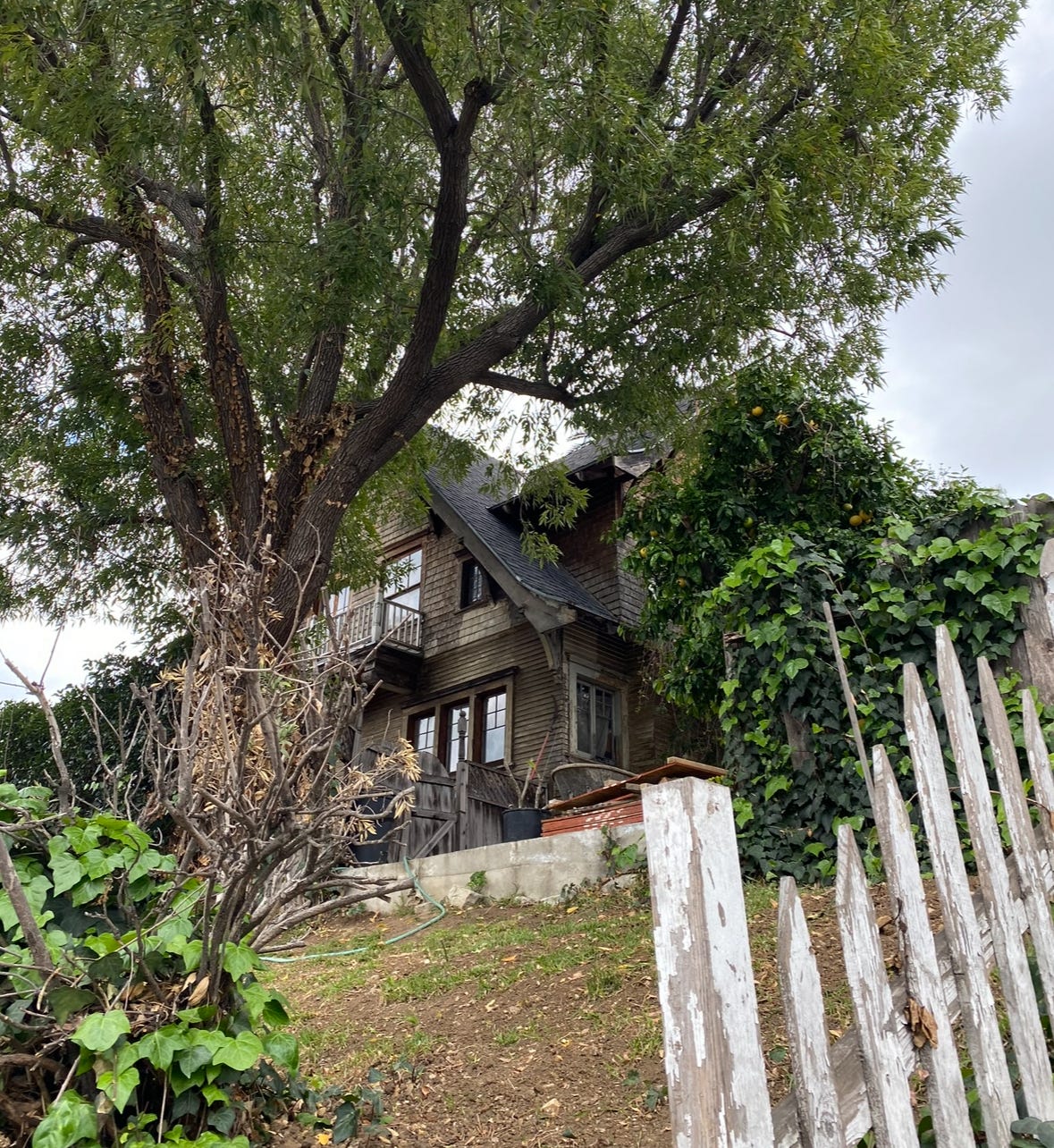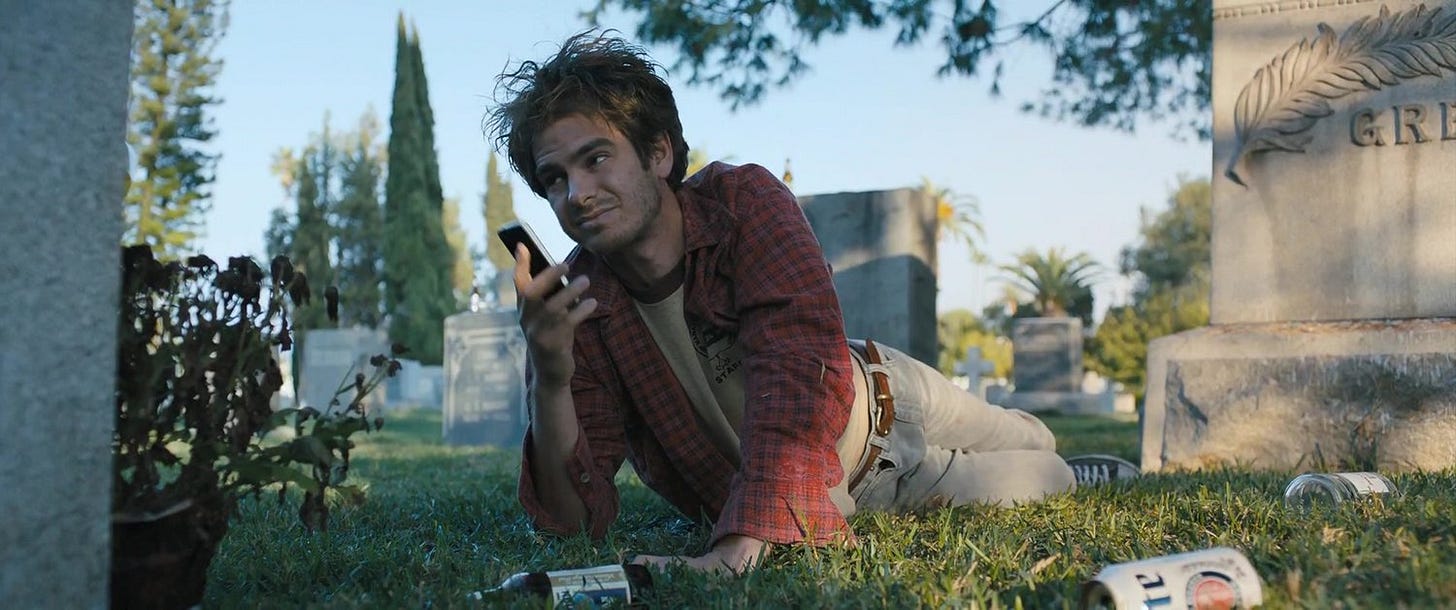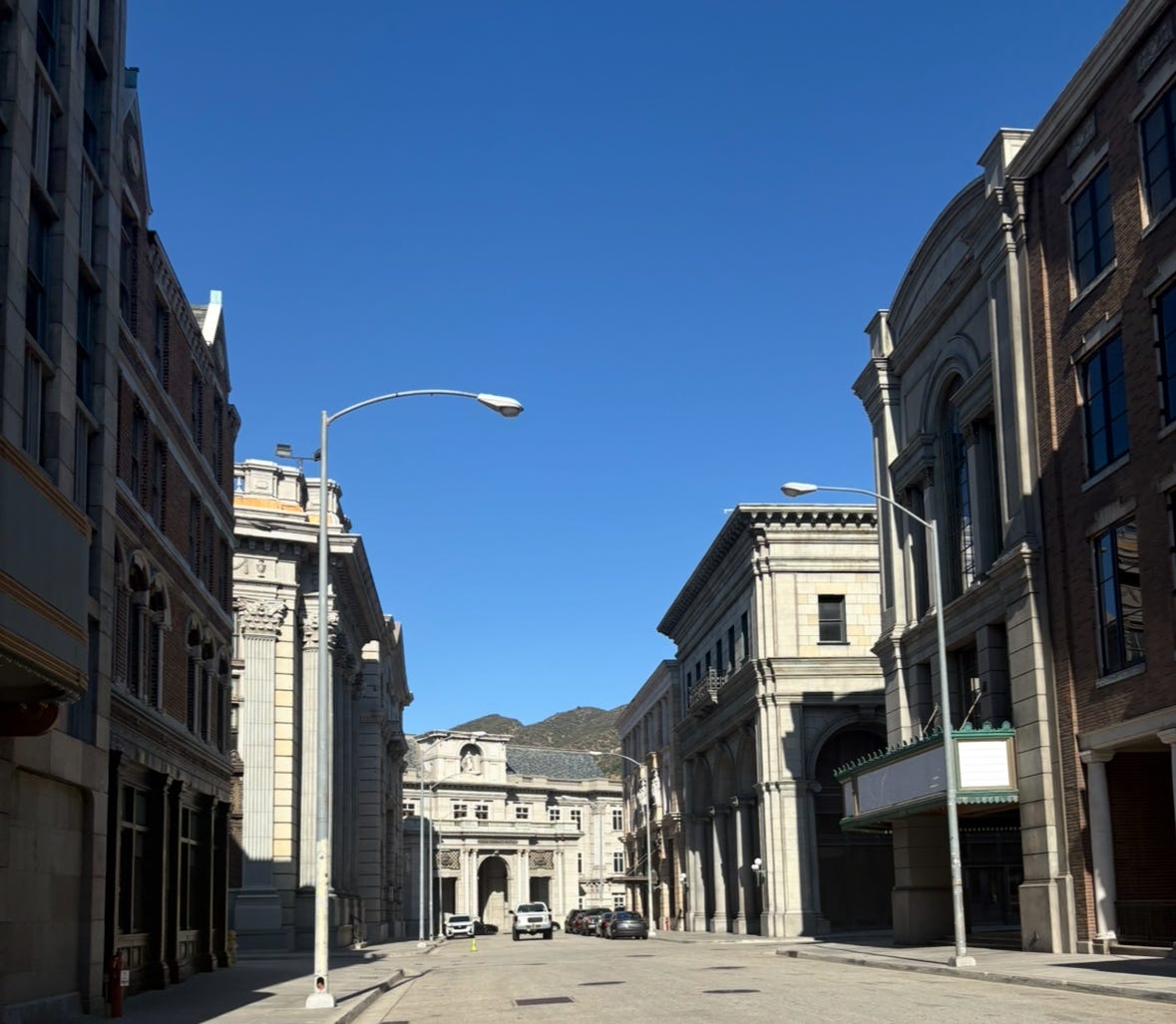I still don’t understand LA.
I think it’s because you drive through it. New York, at at the pace of perambulation, is fundamentally comprehensible: you walk past a place and you understand it, or you crawl past it on a bus, or you rumble past it below, underground, unseen, and it never enters your mental universe at all.
Whereas traveling through Los Angeles one receives only a preview, a promise, a glimpse—one’s imagination can run wild off of a half-lit neon sign, a painted storefront, a boarded-up mansion, a gated bungalow court. What goes on in there?
I enjoy living in New York better on a day-to-day basis than I ever did LA. But New York is utterly and comfortably mundane. I find I understand it easily. It offers itself up without a fight; it has utterly failed to stir in me the kind of compulsive curiosity that Los Angeles did when I lived there.
The longer I lived in LA the stranger it got: the less I understood it, the more I had the irresistible urge to delve, to explore, to uncover what I could not help imagine was some kind of fundamental secret the city held and would reveal to a chosen dedicated few.
Lacking anything resembling a real social life I gave into this urge on the weekends and evenings, exploring the dusty ground of the old Red Car property above Silver Lake, the hidden stairs and passageways around the Hollywood Bowl, the funerary sprawls of Hollywood Forever and Glendale’s Forest Lawn.
Up in Angelino Heights the huge, sun-bleached turn-of-the-century mansions left over from a bygone age of luxurious California living gave way, on my aimless walks, to leafy backstreets hidden from the main avenues, full of ramshackle structures, crumbling apartments lofted out over the hills, to me some kind of wonderland, where real people lived—though for them, the strangeness and beauty I saw would probably have long faded into mundanity.
But even the neighborhood I was resident at the time, in Glendale just north of Atwater, was strange to me, hinting at all kinds of history it refused to reveal: the shuttered diner around the corner, all its decor still intact inside; the furniture store, its preserved 1950s neon sign glowing immortally, turned into office space; the freight trains which would rumble over the nearby bridge late at night, carrying what? going where?
The first time I watched the film Under The Silver Lake (2018, dir. David Robert Mitchell) I dismissed it as a kitschy Lynch rip-off, over-the-top, far too long, too contrived—but then I found I couldn’t stop thinking about it, for months and then years after.
I found out that the scenes at Andrew Garfield’s apartment complex had been shot in Los Feliz, close to where I lived, and I tried to visit, to take one of my investigative walks down past the pool where Riley Keogh floated and through to the darkened riverside walkway where Garfield’s irredeemable yet sympathetic Sam was chased by a murderous owl god. However when I arrived I found the gate to the complex impassable without a key and no residents willing to let me in. This seemed somehow correct.1
Under The Silver Lake, upon rewatch and reflection, confirmed its status as the film that represents Los Angeles’s hallucinatory, kitschy, contrived qualities most accurately to me. There is something going on in the city, something almost fictional, a conspiracy you will never understand completely, never see in its fullness—only ever drive past, or be stopped at the gates.
Along with its most obvious antecedent Mulholland Drive (it even features Patrick Fischler in a supporting role) I suggest pairing the film with Inherent Vice, ideally the book. Lynch evoked the inexplicability of Hollywood and fame; Pynchon got at the weirdness of Los Angeles real estate, which interests me a little more: the way pockets of strangeness cluster around the city, the way that in Under The Silver Lake the climactic, morbid confrontation takes place in Griffith Park, presumably with children frolicking on the merry-go-round just over the hill.
Working as a glorified secretary right after college, essentially chained to a phone inside an often-empty office in West Hollywood, I’d plot out sprawling Pynchonian novels I’d never write: cults at the Paramour Estate, the ghost of Tom Mix haunting Gelson’s, new luxury apartment complexes harboring ancient secrets, billboards for television shows that didn’t exist. Whenever I visit the city these days, all those imagined secrets come back to me as I drive.
Do you have a favorite weird place in LA that you’ve investigated? Or a film or book to recommend that represents that sense of the city’s unknowable secrets? I want to know!
Banger of the week
I just looked it up and apparently only the exteriors were shot there anyway; scenes inside the complex were shot at a stand-in complex in Studio City, and the scenes on the forest path were shot in Griffith Park.






Oh my goodness- every time I read your writing I return to your father’s style and substance in both word and music